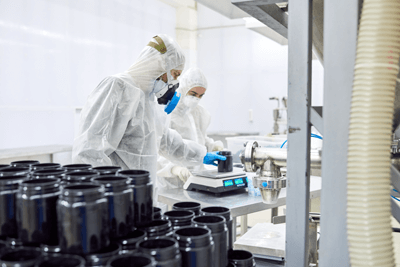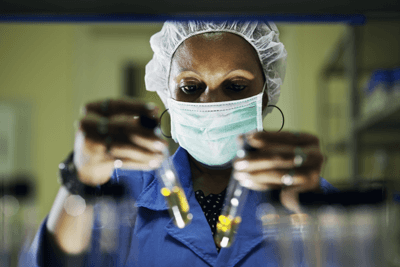Medical Air Filtration Solutions for Healthcare & Manufacturing
The Medical, Pharmaceutical, & Healthcare Sectors
 Encompassing many different sectors, the medical industry supplies goods and services for the restoration and maintenance of patient health. Along with healthcare providers such as hospitals, doctors, nurses, and insurance companies, the medical industry also includes businesses that manufacture medical equipment and pharmaceuticals.
Encompassing many different sectors, the medical industry supplies goods and services for the restoration and maintenance of patient health. Along with healthcare providers such as hospitals, doctors, nurses, and insurance companies, the medical industry also includes businesses that manufacture medical equipment and pharmaceuticals.
Recommended Products for the Medical Industry
The Pharmaceutical Industry
Currently one of the most profitable and influential industries, the pharmaceutical sector researches, develops and manufactures pharmaceutical drugs for the treatment of pain and illness. Workers in the pharmaceutical industry run the risk of harm due to acute and prolonged exposure from the manufacture and handling of drugs. Many of the applications used in pharmaceutical production create dusts that can easily become airborne and contaminate indoor air. These dusts not only pose a threat to worker health if inhaled, but many are also combustible if not safely captured
While much of the procedures used in pharmaceutical production are now automated, workers still come in direct contact with the drugs produced. Worker tasks to manufacture drugs include:
- The manual weighing and dispensing of solids or liquids
- The loading and unloading of solids and liquids to and from containers and/or equipment
- Equipment maintenance and repair
These processes expose workers to harmful dusts either through inhalation or skin contact. The type of reaction suffered as a result of exposure varies and depends directly on the active pharmaceutical ingredient (API). Some workers may experience breathing difficulties and acute skin rashes. More severe consequences of working in pharmaceutical production include:
- Chronic illness and disease
- Reproductive health problems (change in menstrual cycle, loss of libido, spontaneous abortions, congenital malformations)
- Diseases of the liver (liver dysfunction)
- Diseases of respiratory system
- Leukemia and other cancers
To contend against the many health risks, it is recommended that these manufacturers invest in medical air filtration devices such as pharmaceutical dust collectors. These collectors capture harmful dusts at the source, preventing the spread of respiratory health hazards past the site of generation. Combustible dusts can be not just captured, but fully neutralized with the use of a wet dust collector.
Solvent Extraction
Pharmaceutical dusts are not the only threat to worker health. Another application commonly used in the pharmaceutical  industry is solvent extraction.
industry is solvent extraction.
Manufacturers use solvents for a number of different purposes in pharmaceutical production. Besides helping create the drug by supplying molecules, they also can be used for extraction and purification. Common solvents used in pharmaceutical manufacturing include:
- 2-propanol
- Ethyl acetate
- Methanol
- Denatured ethanol
- N-heptane
- Tetrahydrofuran
- Toluene
- Dichloromethane
- Acetic acid
- Acetonitrile
During the solvent extraction process, solvents produce volatile organic compounds (VOCs) that can have a negative impact on their health. The severity of the health condition depends on the amount of VOCs and the length of time of exposure. Short-term, acute exposure can lead to:
- Eyes, nose and throat irritation
- Headaches
- Nausea and/ or vomiting
- Dizziness
- Increased severity of asthma symptoms
Long-term exposure can result in the increased risk of:
- Cancer
- Liver or kidney damage
- Central nervous system damage
For the safe capture of VOCs, Diversitech offers various downdraft booths with carbon afterfilters as well as the FRED Carbo for solvent fume extraction.
USP 800 Guidelines for the Safe Handling of Dangerous Drugs
The United States Pharmacopeia (USP) General Chapter <800>, “Hazardous Drugs- Handling in Healthcare Settings”, outlines the best practices for the safe management of dangerous drugs to protect workers, healthcare professionals, patients and the environment. The goal of USP 800 is to minimize exposure to dangerous drugs while ensuring quality control.
USP 800 applies to personnel and workers who come into contact with dangerous drugs. These professionals include:
- Pharmacists
- Pharmacy technicians
- Nurses
- Physicians
- Physician assistants
- Home healthcare workers
- Veterinarians
- Veterinarian assistants
- Workers in the manufacturing setting
USP 800 advises segregating drugs and using designated equipment to avoid cross contamination. To limit exposure through inhalation and skin contact, proper ventilation with the use of a medical air filtration system is also required. For non-sterile hazardous drug compounding, workplaces must either be externally ventilated through HEPA filtration or internally ventilated through two HEPA filters in a series.
Understanding the challenges that businesses face in light of this new regulation, Diversitech is currently developing equipment to help businesses stay USP 800 compliant.
The Medical Device Industry
Involved in the design and manufacture of medical tools and equipment, the medical device industry produces products that diagnose, monitor and treat human diseases and conditions. These products can include anything from simple tools such as tongue depressors to complex, expensive machines like magnetic resonance imaging systems (MRI’s). This broad range of products means that the medical device industry involves countless applications which produce hazardous dusts and fumes, creating the need for robust medical air filtration systems. The following are just a few of the most widespread applications.
CNC Machining
Common in the production of medical devices is the machining of metals and plastics. Manufacturers use oil coolant to machine materials such as titanium, Inconel, brass, aluminum, stainless steel, Vespel and Ultem. These coolants create airborne mist and smoke, putting worker health in jeopardy.
Chronic exposure to oil mist has been associated with an increased susceptibility of several types of cancer. Other potential health risks include:
- Contact Dermatitis/ Photosensitive allergic dermatitis
- Bronchial asthma
- Lipoid pneumonia
- Rhinitis
- Bronchitis
- Lung fibrosis
- Lung cancer
- Benign and malignant tumors of the scrotum
Safely capturing oil mists in the workplace, Diversitech’s A•erity Oil Mist Collectors can be connected directlyto CNC machines via ductwork.
Deburring
Medical device parts often need to be deburred, creating dusts and particles that pollute indoor air if not captured at source. Containing various toxic metals, composites, rubber or fiberglass, these dusts can cause serious health problems if inhaled over time. Medical deburring dust may also be combustible, posing a risk of fire or explosion if not handled appropriately.
Dusts from deburring most commonly affect the lungs, leading to conditions such as pneumoconiosis, also known as “dusty lung”. Over time, pneumoconiosis leads to a buildup of scar tissue in the lining of the lungs, contributing to serious, chronic issues.
Other health problems associated with deburring dusts include:
- Black lung
- Silicosis
- Tuberculosis
- Kidney disease
- Lung cancer
- Mild respiratory irritation
- Nausea and/or vomiting
- Headaches and dizziness
- Irritated eyes, nose and throat
- Chest pain
- Respiratory damage
- Difficulty breathing
- Excess fluid in the lungs
- Lead poisoning
- Nervous system damage
Effective capture-at-source or ambient medical air filtration solutions help control deburring dusts and maintain indoor air quality. Diversitech provides a number of different downdraft tables and cartridge dust collectors for the safe removal of medical deburring dust. Wet downdraft tables are recommended for the capture of combustible dusts.
Additive Manufacturing (3D Printing)
The use of 3D printers is becoming more and more common in the manufacture of medical devices, particularly those made from plastic. The process of 3D printing releases a number of contaminants including ultrafine particles (UFP) and VOCs that can have a negative effect on worker health.
Easily invading the human body, UFP’s directly impact the lungs, causing conditions like asthma. Also associated with cardiovascular issues, UFP’s can become carriers of toxins in the bloodstream.
Common conditions caused by VOC exposure include:
- Eye, nose and throat irritation
- Headaches
- Nausea/ vomiting
- Dizziness
- Worsening of asthma symptoms
- Liver damage
- Kidney damage
- Central nervous system damage
- Cancer
Metal powders produced by 3D printing have been linked to:
- Eye and skin irritation
- Pulmonary fibrosis
- Pulmonary disease
- Gastrointestinal issues
For the collection of metal and plastic particulates from 3D printing, Diversitech offers self-contained downdraft tables tables as well as wet downdraft tables for the safe handling of combustible dusts.